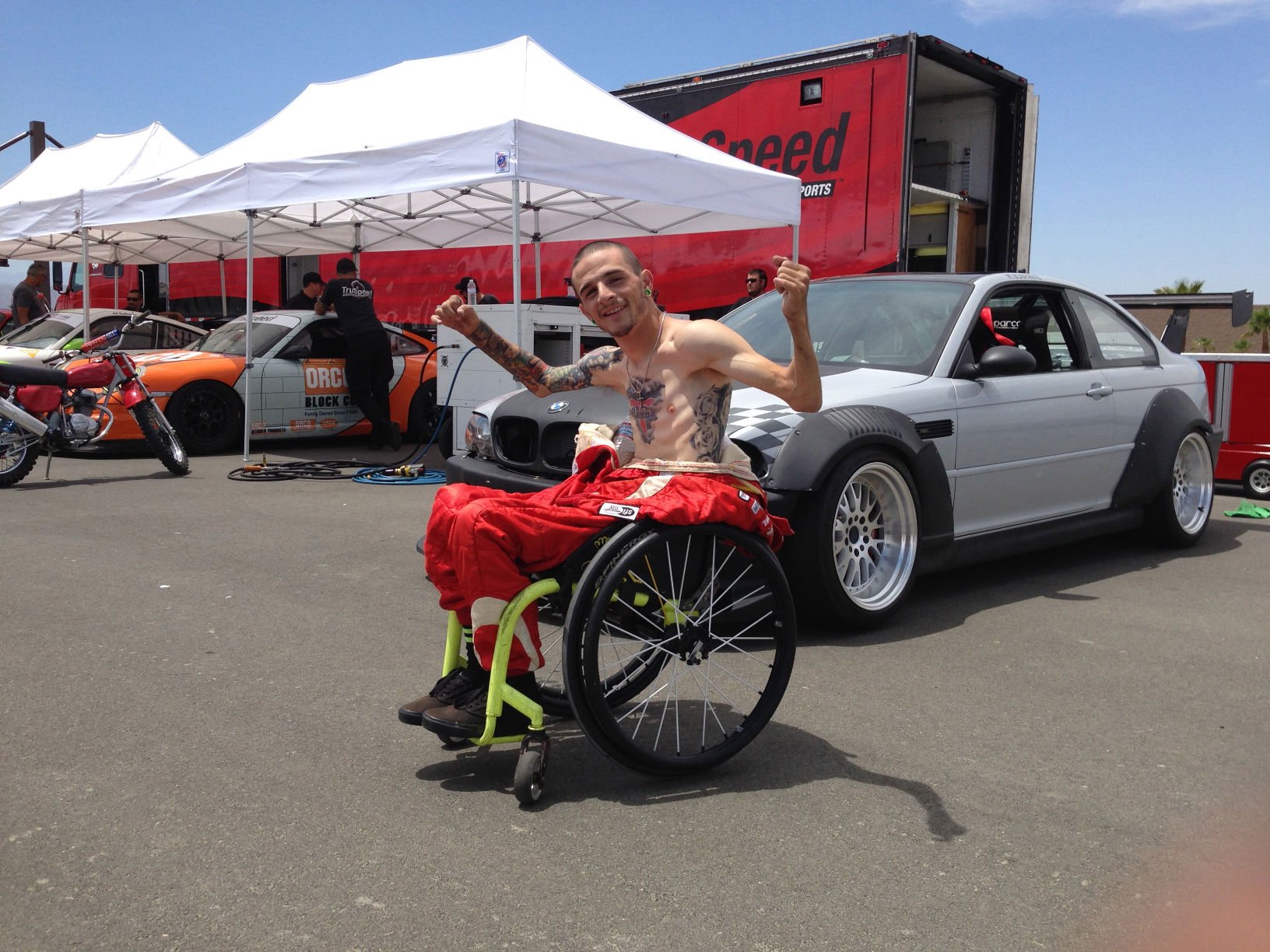
GILROY—Mario Bonfante Jr. is in the business of proving people wrong.
At 17, he was a budding star of the street racing scene when he was paralyzed after breaking his neck in a freak BMX accident at Christmas Hill Park. Bonfante fractured his C5 and C6 vertebrae and was left paralyzed from the chest down, leaving him without the use of his legs and hands.
The injury, Bonfante said, wasn’t a big deal, but giving up on his whole career was. He dreamt of racing—going as fast as possible—and he wasn’t about to let his injury get in the way.
Rather than focusing on what he couldn’t do, Bonfante discovered what he could. For starters, he still had mobility in his wrists, which was a sign to him that he should still twist a throttle. His days of BMX and motocross racing trained him in body control and awareness. And being confined to a wheelchair only fueled his need for speed.
“I’m supposed to go fast. I knew it wasn’t going to be right away that I’d be able to do what I wanted to do,” Bonfante said. “People don’t really believe you can do what you say you can when you can’t even shake their hand. They’re like ‘how are you going to drive a car?’”
But in 2012, nearly six years after his life-changing accident, Bonfante did what he does best: he proved his doubters wrong. Using special controls, the Gilroy native hit the track and competed in his first National Auto Sport Association race.
Bonfante is still competing with NASA three years later, but is ready to switch gears. He has his sights set on rally car racing and hopes to utilize new steering controls that he designed himself.
Currently, most “differently abled” drivers use a device that requires they have one hand on the wheel and the other on the gas and break knob. Bonfante’s own design allows drivers to have both hands on the wheel.
On the right, users twist for throttle, pull back to upshift and push forward to downshift. On the left hand side, drivers push forward to brake.
“You’re able to do pretty much everything you need to do to control the car,” Bonfante said.
Word of Bonfante’s invention has spread and drivers around the world want the same technology in their cars, he said. While there’s “high demand” for the devices, Bonfante is currently working to garner enough funds to build prototypes for different vehicle makes and models.
A Washington state rally school named DirtFish also wants to utilize Bonfante’s technology. They’ve also sought his help in establishing a program for drivers in his situation looking to break into rally car racing—which exactly what he wants to do. Bonfante will head up to DirtFish on July 29 to attend the school and test out some of its new vehicles.
“It kind of worked out all serendipitous with the timing and with what they want to do with the school,” Bonfante said.
Aside from racing, Bonfante has been busy with his business, one that specializes in car modifications for “differently abled drivers,” as he calls them. He has also been giving motivational speeches to individuals in similar situations. He hopes those he speaks to will put his person motto to “keep ‘em spinning” into action and continue to chase their own dreams.
“Life’s not over after your injury, the world keeps spinnin’,” Bonfante said. “You’ve just got to keep spinnin’ with it.”












